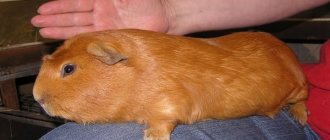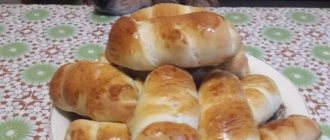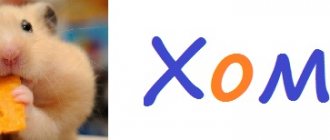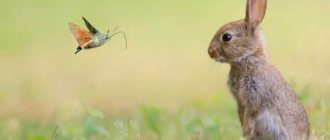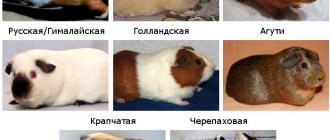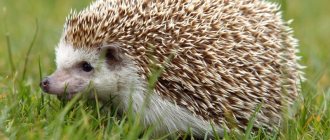“I just throw bread to the birds.” This may be a saying you've never heard of before. However, later I began to wonder: “Can I feed my parrot bread?”
The answer to this question is both yes and no. Yes, you can feed your parrot bread, but only certain types of bread. Some breads contain high amounts of salt, which can be harmful to your parrots' health, so be careful when choosing bread if you plan to feed them.
With that said, bread should never be a staple in a parrot's diet because it has no nutritional value for them. It should only be given as an occasional treat.
Nutritional value of bread for a parrot
In truth, feeding your parrot bread has no nutritional value. In the wild, a parrot does not eat bread.
Therefore, feeding them bread in captivity actually does little to help them nutritionally. White bread, for example, is full of extra calories and carbohydrates, but lacks the essential vitamins and nutrients a parrot needs to thrive. You can boost the nutritional value of your bread a little by choosing whole grain bread, which at least contains small amounts of fiber, minerals and vitamin B.
In general, however, bread does not have much nutritional value for your parrot. So, even if you choose bread that won't harm them, you won't be adding any value to their diet by feeding it to them. This is why even safe bread is only offered as an occasional snack. If your bird eats bread regularly, he won't have enough stomach space to take advantage of other foods that will provide him with the nutrition he needs.
Cell selection
The size of the cage depends on the size of the parrot you choose to keep. Cages for cockatiels and budgies should be between 45 × 45 × 60 cm in size. It is advisable to have a tray in the cage to make cleaning easier. You can lay paper towels on it or pour special sand. The cage should have wooden perches made from fruiting tree varieties. A drinking bowl for the parrot and two feeders (for dry and wet food) should be attached to the rods. You can attach various entertainment and toys that are sold in pet stores.
Place the cage in a place away from drafts and away from direct sunlight. A place far from the TV and speakers, where there is no vibration or noise and where other pets cannot reach. The room temperature should be kept around 18-20 degrees.
From time to time, your pet parrot should be allowed to fly around the room.
The problem with most breads
Most bread should not be given to a parrot. The reason for this is that most breads are highly processed and contain chemicals and preservatives that can be harmful to your parrot.
In addition, bread is full of carbohydrates. Yes, they help satisfy the hunger of parrots, but they have no nutritional value. In turn, your parrot is full, but no longer has room for the food and nutrients it needs to stay healthy. What's also bad for bread is that most breads contain large amounts of salt, which is very bad for parrots.
In fact, excessive salt intake can be toxic to parrots and cause serious health problems. In particular, too much salt can disrupt your parrot's electrolyte balance. The result can be excessive thirst, dehydration, impaired kidney function and, in severe cases, death.
In turn, whenever you feed your parrot bread, you should always double check the salt content. A small amount of salt may be okay, but if your bird gets too much salt, it can be harmful to him.
Choosing a parrot and its adaptation to a new home
It is best to buy a parrot from breeders who have many positive reviews. This way you can be sure that you will get a healthy bird, and the breeders also provide advice on maintenance. Parrots are sold in pet stores, but here you need to be careful. Very often, pet store workers do not have special knowledge about the proper care of animals, and the birds are kept in poor conditions. In addition, it is not clear where the parrots came from in the pet store. When purchasing from a pet store, you need to monitor the quality of the food in the cage, the cleanliness of the tray, and the appearance of the birds. You can ask various tricky questions to the seller to understand how knowledgeable he is about keeping parrots. The riskiest option for buying a parrot is at the bird market. Here you can no longer be sure of the bird’s health.
When purchasing, you need to pay attention to the condition of the parrot's feathers. They should be bright and smooth. The eyes should not be cloudy. The wax and beak should not peel off. The bird must be active and inquisitive. The ideal age to buy a parrot is 6-7 weeks; an older bird will be difficult to tame.
You need to buy a parrot in ready-made conditions. The carrier with the animal can be placed in the cage and wait until the bird gets out. At first, you shouldn’t bother the bird too much. Let the parrot get used to its new home. You can talk to him calmly so that he gets used to your voice. It is advisable to keep the purchased parrot in quarantine from other parrots and pets for a couple of weeks, so as not to infect them if the animal is sick.
The rules for keeping parrots of different species may differ slightly, because they live in different natural conditions and also eat differently. Before purchasing a bird, you need to thoroughly study the basic rules for keeping the selected species. In the right conditions, parrots rarely get sick, but if you notice symptoms of illness in your pet, you should immediately see a doctor.
Thus, we looked at whether parrots can eat bread, how to feed them properly, what kind of cage to buy and how to equip it.
What types of bread can you feed your parrot?
If you are going to feed your parrots bread, choose bread that is low in sodium. It is advisable that the bread be whole grain or multigrain and produced organically with limited preservatives. You can increase the nutritional value of bread by:
- Add some peanut or nut butter
- Add jelly or marmalade
- Pressing insects into bread
- Adding cranberries, raisins or other dried fruits
- Adding Nuts
Should you feed your bird bread crumbs?
First, let's determine the composition of the product.
The overwhelming percentage of sales comes from white bread - wheat and black bread - rye. Less common are combined (wheat-rye), bran and whole grain products.
We will not consider the latter, because it is extremely difficult to analyze the composition of such products due to the diversity of recipes. The ingredients of classic wheat bread (dinner) and sliced loaf include flour, sugar, salt and yeast.
Some manufacturers add dairy products, margarine, vinegar and spices to the product. Bread contains a relatively small amount of vitamins and minerals. The main share comes from carbohydrates.
Some people have a genetic predisposition resulting in gluten intolerance (bread gluten). For this group, regular bread is contraindicated, and violating the gluten-free diet is fraught with serious consequences, including death.
The basis of black bread is rye flour, malt, yeast, sugar and salt. Such products contain a large amount of essential amino acids, phosphorus, vitamins PP and B, as well as zinc and manganese. Both white and black bread contain elements beneficial to the animal’s body.
However, the presence of spices and gluten negatively affects the gastrointestinal tract of birds. The latter are only partially digested, disrupting the intestinal microflora. That is, here we have a double-edged sword. Whether bread will be beneficial or harmful depends on the type and dosage of the product.
Can a parrot eat black bread?
Brown bread often gets a better reputation than white bread, but the truth is that dark bread is not necessarily healthier. In fact, you can look at brown bread as white bread in disguise. They are essentially the same thing, and one is no healthier than the other. Both brown and white breads are highly processed and contain chemicals and preservatives that can be harmful to us and our birds.
What's even more interesting is that brown bread contains more sugar than white bread. Specifically, one slice of white bread contains approximately 1.64 grams of sugar, and one slice of brown bread contains 3 grams.
Sugar is not something we should feed our parrots, so brown bread is not on the “safe” list.
So why has brown bread gained such a good reputation? Probably because most people confuse it with whole grain bread. Whole grain bread is much darker than white bread, so it is often confused with brown bread. It's not the same thing. Whole grain bread is much healthier, and if made organic, it doesn't contain the same amount of processed preservatives and chemicals.
Is it possible to give parrots crackers?
Giving your parrot white bread is healthier when dried. This makes the crumb less sticky. Solid food does not clog the crop and passes through the esophagus more easily. For the same reason, birds are allowed to give crackers made from black bread. Before feeding them, you need to cut or break them and evaluate the condition of the crumb inside. If it remains soft, such crackers are not suitable for feeding. Properly prepared crackers should have a uniform, dry and hard consistency. At the same time, there should be no burnt areas on them.
Rusks are given to birds in pure form or mixed with other feed. Parrots love mash made from breadcrumbs, vegetables (for example, grated carrots) and crushed boiled eggs.
Attention! It is prohibited to feed birds crackers made from moldy baked goods, as well as ready-made crackers with salt and spices sold in stores.
Can parrots eat multigrain bread?
Yes. If you are going to feed your parrots bread, multigrain is best. However, remember that depending on the brand, some multigrain breads may still be highly processed. To get all the benefits of unprocessed bread, always choose organic products.
However, while organic multigrain bread won't harm your parrots, it's important to remember that it won't do them any good. You can add peanut butter, nuts or other alternatives to increase the nutritional value, but you should still limit multigrain bread to occasional snacking.
Prohibited Products
When feeding your budgie, be sure to take into account the fact that its body is not designed for many of the foods we are accustomed to. After all, poultry digestion is mainly aimed at processing various grains. Here is a list of foods that should absolutely not be given to wavy pets due to their high content of harmful substances:
- milk (cream),
- cheese (especially salted),
- coffee,
- alcoholic drinks,
- potato,
- chocolate,
- fried foods,
- fatty foods,
- salty foods,
- sweet products,
- sausage (sausages),
- meat - in rare cases, you can give the parrot a piece of boiled chicken,
- fruits: avocado, mango, papaya, persimmon,
- spices,
- spinach,
- nuts,
- seeds of apples, pears,
- onion,
- garlic,
- mushrooms.
What does your parrot like to eat?
If you liked the article, share it with your friends and like it.
What to do if a parrot gets into a bag of bread?
Parrots can be tricky, and when we're not looking, they can sneak into things they shouldn't.
If your parrot gets into your bread, keep a close eye on it. As mentioned earlier, a small amount of bread is unlikely to cause harm. Watch for signs:
- Labored breathing
- Lethargy
- Loss of interest in daily activities
- Loss of appetite
- Litter change
- Excessive thirst
- Lack of energy
- Sneezing
- Dull or plucked feathers
- Blood
- Or any other sign of illness
In other words, monitor your parrot closely for any abnormalities. If you notice anything unusual, call your veterinarian immediately to have them checked.
Hygiene
It is advisable to remove leftover food and waste from the bottom of the cage every day, wash the perches of droppings and pour boiling water over them. Also, the parrot's drinking bowl needs to be washed every day and the water replaced with fresh water. It is advisable to remove wet food after a few hours so that it does not spoil and the bird does not get poisoned.
Once a month a general cleaning is required. It is advisable to remove the parrot, disassemble the cage, wash it, and disinfect it with a 1-2% manganese solution.
Is there any harm
If a parrot has stomach problems, such as high acidity, then apples should be abandoned in favor of fruits with a more gentle composition: bananas, peaches, plums, etc.
The fruits should also not be given to immature young animals who have not yet begun to eat on their own. It is better to refrain from treating your pet with apple seeds. The seeds contain amygdalin glycoside, which releases toxic substances when processed. They will not cause harm to the body of adults and large individuals, such as cockatoos, macaws or African grays, but small birds - lovebirds or budgerigars - can be poisoned.
Some parrots cannot tolerate certain elements in principle, which is expressed by allergic reactions of various kinds. Therefore, before including apples in the diet, it makes sense to give your pet a small piece to try.
The fruit selection procedure deserves special mention. It often happens that a beautiful-looking and tasty fruit turns out to be a carrier of dangerous substances. And if the human stomach has more or less adapted to pesticides and other chemicals, then the gastrointestinal tract of a bird can cause serious problems, and in difficult cases lead to death.
Key points when choosing apples:
- presence of damage;
- elasticity;
- color;
- size;
- smell.
There should be no dents or dark spots on the surface. If, when you press on the peel, it bends easily, then most likely the apple is not fresh. Too bright colors should immediately alert you. Good fruits have a uniform and non-flashy color.
Better to give up the giants. Large sizes are largely the result of chemicals, not agricultural technology. The best option is a medium-sized apple. The fruits must emit a characteristic aroma for the crop. The abundance of chemicals partially neutralizes the smell, so its absence is a bad sign.
Some people are afraid of radionuclides in apples and GMOs. In fact, these are unfounded fears. Radionuclides accumulate only in the soil, and apples grow on trees. Given the existing varietal diversity, improving apples at the genetic level is simply unprofitable. It is more practical to carry out another selection.
How to give fruit to birds and in what quantity
The dosage depends on the subspecies of the bird and its personal preferences. For small individuals, such as budgies or lovebirds, 1/6 of a medium-sized apple per day is enough. For larger birds, the norm can be increased.
When creating a diet for each specific pet, it is advisable to consult with the breeder or veterinarian. It happens that parrots flatly refuse the offered treat. Birds, just like people, love one thing and absolutely cannot stand another.
It is better to serve an apple peeled to small individuals, while large parrots can easily cope with peels of any thickness. Shape also matters. Some pets like to chew fruit from a special holder, while others prefer mushy pulp.
Baked and fried fruits should not be given to birds: only fresh or as porridge. It is also unacceptable to add sugar, salt and seasonings. The latter will immediately have a negative impact on the animal’s gastrointestinal tract, and in difficult cases can lead to serious poisoning.
You should not overfeed your pet with apples. Overdose can lead to loose stools
When serving fruit at the same time, it is important to monitor the dosage of vitamins and minerals. An excess of nutrients sometimes manifests itself worse than a lack of them
Is it possible or not?
Having a parrot at home, many may wonder whether it is possible to feed it flour products, and what consequences should be expected after an overdose. Parrots are poultry for which white bread is not a delicacy; they can also eat black bread with minimal desire. A delicacy for them is special food, namely various grain mixtures.
To add variety to your pet’s diet, you can occasionally replace the mixture with flour products, which are allowed only in minimal portions. It is worth remembering that rye bread is strictly prohibited for birds, because it clogs the stomach, negatively affects the digestive system, and causes discomfort in them. The crumb of rye bread is very harmful. And if street pigeons happily feast on it and take it as a delicacy, then it can have a bad effect on the health of pets.
What else can't you give?
Non-recommended foods include primarily products of animal origin (with the exception of a small amount of chicken eggs): meat, fish, fish oil, sausage, etc. From the dairy assortment, it is allowed to offer a little cottage cheese, but not milk and its other derivatives.
You should not give parrots pasta, cereals, soups and other boiled or fried food from the common table. Birds' stomachs are not designed to digest such food. Spices are contraindicated for pets - salt, sugar, pepper, and any products containing them. Naturally, you should not offer birds alcohol or sparkling water.
Breeders agree that parrots can be given white bread. But only in limited quantities. First of all, you should carefully read the composition of the product, because high levels of yeast and spices are contraindicated for birds. Bread that has passed this test should be dried and offered to your pet in this form.
Feed rate per day
The cockatiel is a medium-sized parrot and can eat approximately 30g of food per day. This is the total amount for an adult: 2 teaspoons of grain mixture, succulent food, grass. If the bird does not empty the feeder during the day, you need to reduce the portion. Feed poured in the morning should not be left overnight. It is thrown away, the feeding container is cleaned and a small amount of dry assortment is added before bedtime so that the pet can satisfy its hunger after waking up.
It is quite difficult to feed such a picky bird as a cockatiel. She is also suspicious of colored granules in ready-made mixtures, and unfamiliar fruits, vegetables, and foods with an unusual smell. And yet, an impressive list of what you can feed your cockatiel allows you to create a complete diet, healthy and nutritious.


